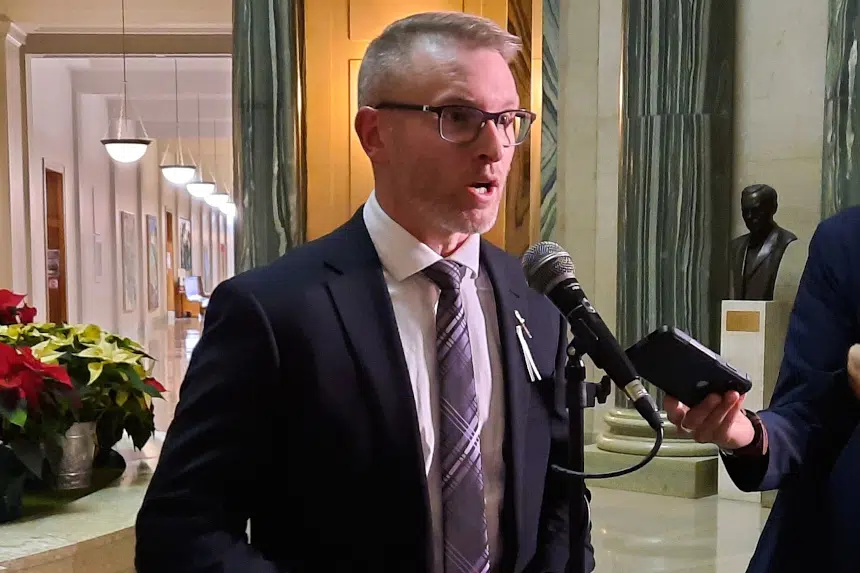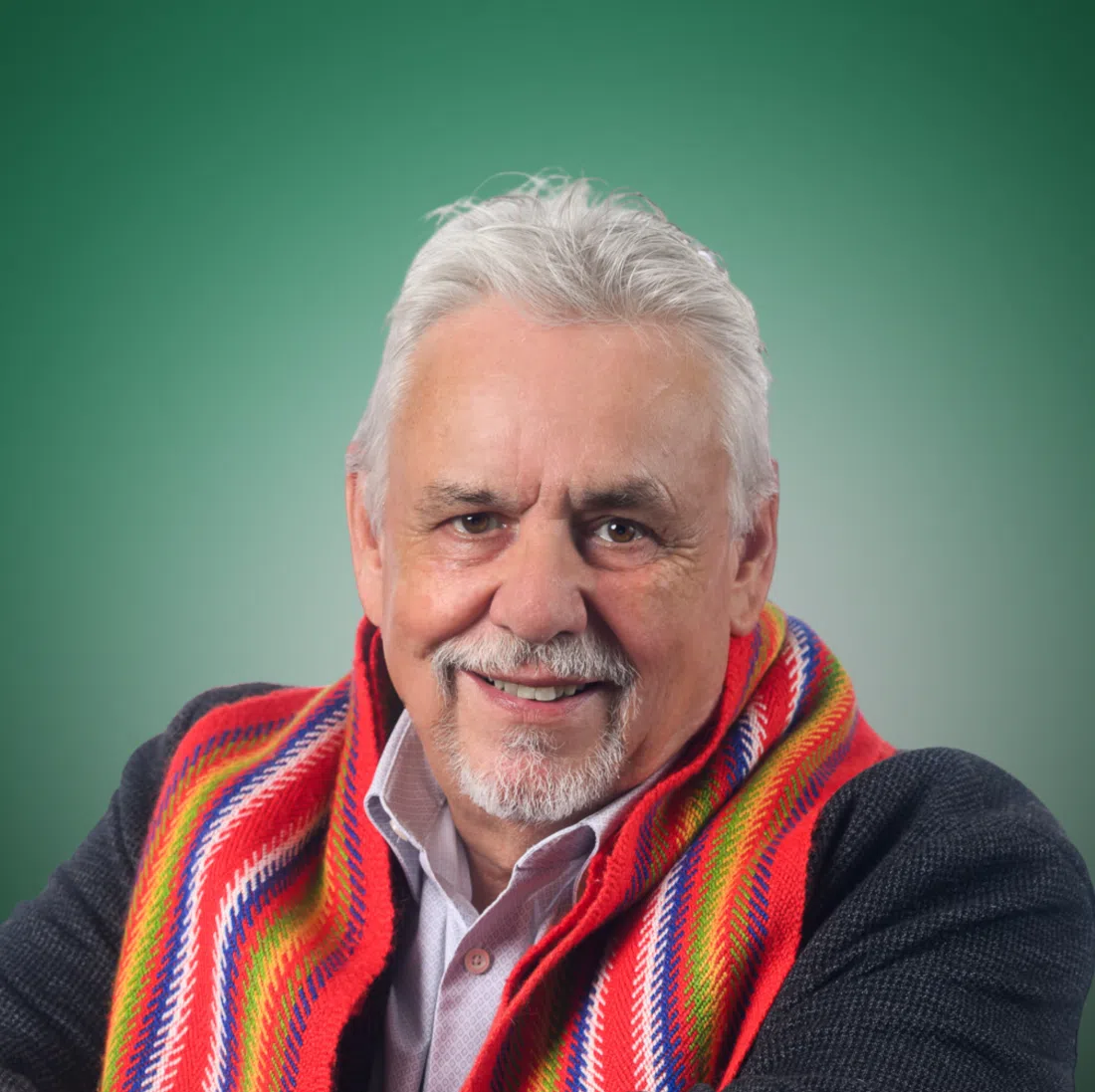For once, it’s a subject Saskatchewan would not want to be leading the pack in – suicide rates – but the province has consistently been either at the top or among the top for suicide rates among the provinces in the last several years.
This month is the three-year anniversary of Pillars for Life, a suicide prevention plan touted by the Saskatchewan Party government but criticized by some others. But three years in, is it working?
Rebecca Rackow said that’s a hard thing to determine because it got such a slow start.
“So it’s hard to say if we’re on task to make some very strong changes and move in the right direction or how effective this will be. As time goes on, it’s hard to say,” she said.
She couldn’t say whether the slow start was due to the COVID-19 pandemic or just how long it can take to realize an idea.
Rackow is the director of advocacy, research and public policy development for the Canadian Mental Health Association (CMHA), Saskatchewan division.
When she and other from the CMHA were first presented with the Pillars for Life plan, she was skeptical, worried that it was a nice idea but there wouldn’t be anything that really came out of it.
“But we’ve been proven wrong to some extent,” said Rackow.
She said there’s been some engagement with community groups and communities themselves, and some resources put into doing things like creating a suicide prevention, life promotion, community of practice that stretches across the province.
“That is to get people with lived experience and people who work with people who have lived experience with suicide ideation and family members and professionals from all over the province to talk about suicide and prevent the kind of things that they’re doing in their communities so we could learn from each other and grow,” explained Rackow.
She said the group is almost 50 people strong so far.
“That’s a step in the right direction, is being able to learn from each other and open up and talk about the issues at hand regarding suicide and suicide prevention so that we can start looking at how to help reduce the high numbers that are in Saskatchewan,” she said.
Other things being done that Rackow has seen are the provincial government working to making the Mental Health Commission of Canada’s suicide prevention tool kit more Saskatchewan focused, giving out licences for suicide prevention training, and work in specific prevention and intervention strategies.
Rackow has some criticisms as well.
She said the province hasn’t really addressed the determinants of health like intergenerational trauma, poverty, colonization, accessibility to good health care, and food security.
“(It’s) paying attention to the needs that people have and the things that can be predictors of communities that end up struggling with suicide,” said Rackow.
“Some of those things, I think, still need to have to be worked on in order to decrease the level of suicides and attempted suicides that we’re seeing.”
Echoing what many other critics of the provincial government have said on several files, Rackow has some critiques of how the plan was put together, saying it was more of a consultation than a collaboration. She was part of a small group meeting on the plan.
“They did not ask what is needed at all, they presented, ‘This is the solution we’ve come up with. Here you go.’ And when we asked, ‘Well, when was it decided that those are the specific steps that are required?’ they had in-house research teams and like that doing it,” said Rackow.
Politics
The provincial government is taking steps through this plan, but Rackow said there is still a lot of work to be done.
In its update released for the third anniversary of the project, the provincial government listed several things that had been done through Pillars for Life, only a couple of which were new for the third year and hadn’t already been in place in the first or second years.
One was the safe medication disposal program which publicized the fact that a person can bring their unused medication to a pharmacy to be disposed of safely.
Another was the funding provided to the Federation of Sovereign Indigenous Nations (FSIN) for a mental wellness on-the-land camp for First Nations youth from cities, as well as the development and training of peer supports.
Mental Health and Addictions Minister Everett Hindley defended the program, saying the government continues to build on it year after year with people and groups across the province.
“It’s difficult to pinpoint. There’s no one-size-fits-all approach to it, I would say, which is why regardless of where people reside in this province we want to make sure that they have access to those supports,” said Hindley.
He said there’s no single, easy solution to this problem and that’s why there are a number of things the government is working on. He called the issue a work in progress.
“That’s why the engagement is important, to make sure that we’re hearing from people in communities across this province to make the changes where we need to make them,” said Hindley.
On top of Pillars for Life, Hindley’s office is working on implementing recommendations from the Provincial Auditor made in 2019 treating patients at risk of suicide in northwest Saskatchewan.
Hindley said this is a significant issue in that area.
“I travelled to the north last summer. I have regular engagement with our MLA for Athabasca, Mr. (Jim) Lemaigre, who serves as my legislative secretary for mental health and addictions, and he’s regularly engaged with the communities in his constituency as well,” said Hindley.
In 2021, Tristan Durocher walked 600 kilometres to the lawns in front of the Legislative Building in Regina to bring attention to the problem of suicide in the north. He was joined at an event during this 44-day fast by leaders from the north who shared stories of losing friends, family and community members.
As for implementing those recommendations from four years ago, Hindley said some significant work has been done but the government is still working on others.
“Some of this could happen, I would say, more quickly than others. Some of this is more longer term in terms of the work that needs to happen, making sure that we do provide those supports that people are looking for,” said Hindley.
“It would be my expectation that we conclude the work on those recommendations (and) make sure that we get the recommendations addressed.”
Hindley said the goal is prevention, making sure people have the ability to access mental health supports for mild, moderate and severe challenges. But access to professionals – psychiatrists, psychologists, counsellors and psychiatric nurses – is often cited as a large barrier in the province because there aren’t enough and wait lists can be incredibly long.
Hindley said this is an area the government has been focused on for quite some time.
“We do have the SHA working to try to hire at least two child psychiatrists in Prince Albert, possibly more. We’re taking a look at all the initiatives (and) the incentives we have in place there,” the minister explained.
Vicki Mowat, the Saskatchewan NDP’s mental health and addictions critic, said the province continues to lose people to suicide and we need to have supports available for people when they’re ready to ask for help.
“We’re consistently seeing that that’s not the case in this province, that people are seeking private providers for care, that they’re not able to have those counselling services publicly available, that there are long wait lists for access to mental health care,” said Mowat.
“All of this needs to be addressed and this government needs to take those actions seriously. Their failure to act on the recommendations in the 2019 provincial auditor report demonstrates that they’re not taking this issue seriously.”
Mowat also referred to the suicide prevention act introduced by her colleague Doyle Vermette, which finally passed in 2021 after the third time he introduced it.
That act required government to consult with stakeholders and that officials come up with a meaningful prevention strategy.
“They have done neither of those, so it begs the question of why did they bother passing that legislation in the first place if it wasn’t just for show? We need to see action to follow up on the fact that they passed that act,” said Mowat.
According to the Saskatchewan Coroners Service, there were 311 deaths by suicide in the province in 2019, and preliminary numbers show 202 in 2020, 209 in 2021, and 218 in 2022. Early numbers show 12 in the first three months of 2023.











